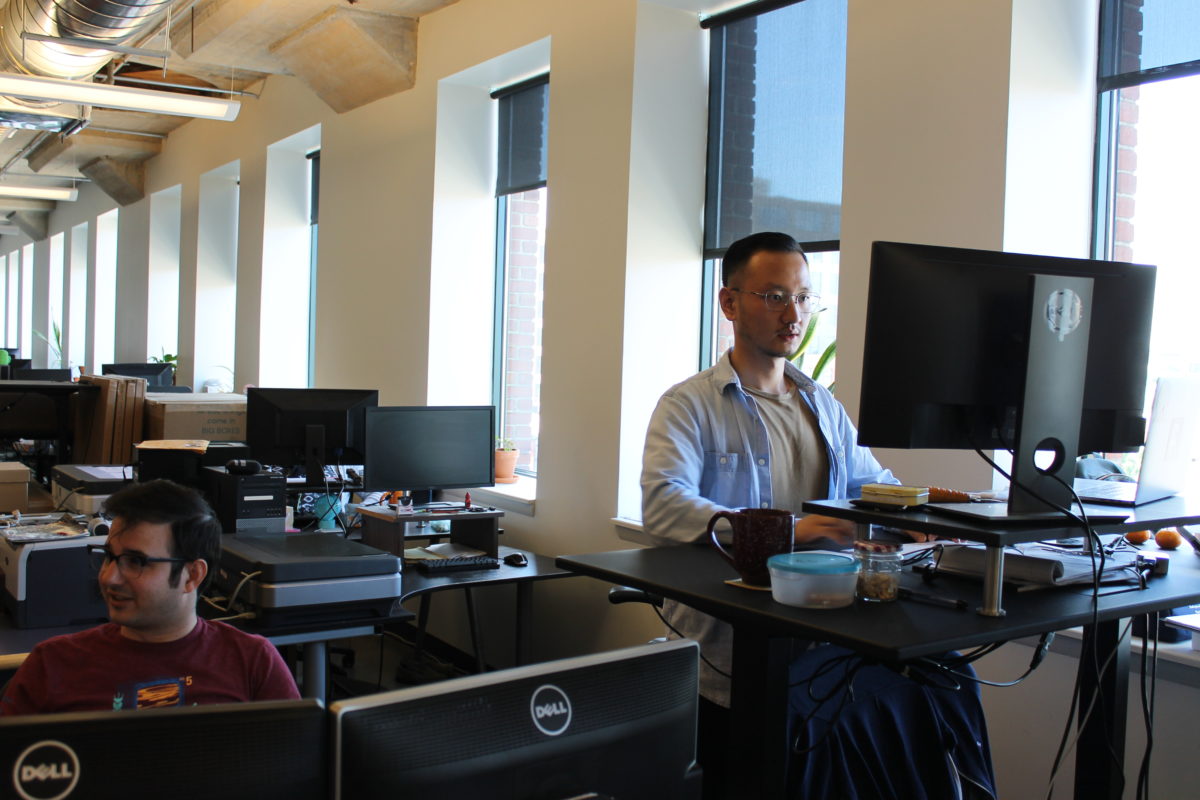Apprenticeship programs in tech allow employees from nontraditional backgrounds to gain applicable skills for jobs in the industry.
At Callowhill-based Azavea, they’ve been used to strategically build its own talent pipeline piece by piece, targeting untapped communities and applicant pools. Through mentorship, client work and on-the-job learning, the program helps individuals who don’t have related experience or a formal degree learn software development.
VP of Finance and Administration Karissa Justice has seen apprenticeships at the geospatial technology company help people with marketable skill sets develop new skills and then go on to have fulfilling careers. Apprenticeships in previous years have also allowed Azavea to recruit immediately for open entry-level roles at the company from within the apprentice pool, some staying for eight to 10 years.
But the pandemic has changed the way the company has coordinated its apprenticeship program in a significant way.
Here are some key takeaways from Justice — who has been with the company since January 2015 but is leaving her role at the end of the year — on what makes a successful apprenticeship, and how the practice has changed during the pandemic.
Apprenticeships are cost effective for companies but require time.
Justice explained that apprenticeships help companies in that they minimize hiring costs, but in order for them to work, they need adequate time to work with apprentices. Many of Azavea’s employees are also parents and have had their hands full during the pandemic.
“One of the challenges we have run into is apprenticeships, if done right, require a large time investment in terms of mentorship from people,” she said. “The challenge is not that the budget isn’t there, but many of our employees are parents of young children and don’t have the bandwidth to mentor somebody else.”
Apprenticeships reflect changes in the way millennials seek employment.
Justice noted that while millennials’ habits in switching jobs to find the best fit are often criticized, she believes the onus is on organizations to help employees grow. Apprenticeships can provide those opportunities to people who have finished a degree or bootcamp and are still refining their skills.
“In my personal opinion and underlying philosophy of professional development programs overall, there is much rhetoric on young people switching every two years, but people aren’t dumb and want stability,” she said. “If you feel like you can’t grow, you’ll leave.

Flexibility is key in managing apprenticeships during the pandemic.
The company usually hosts five to six fellows during the summer and had to reduce that number to two this year because of a lack of internal capacity, with employees focused on their own shifting responsibilities.
“We weren’t able to [host] any software engineer fellows because our software engineers didn’t have the capacity,” she said.
Remote apprenticeships help hone timely skills.
Justice said both of this year’s apprentices valued the skills that came with a remote fellowship and felt like it readily prepared them for the current professional climate. The apprentices gained experience in doing remote presentations and coordinating remote client project management meetings.
“One of the things they both commented on in terms of feedback was that a remote fellowship was helpful in gaining new professional skills in remote work,” she said. “They both felt more confident in interviewing and working on remote teams in the future based on skills they gained this summer. It’s not [just] that they learned how to do GIS or code software, but other professional skills.”
Apprenticeships assist with employee retention.
For Justice, another benefit of apprenticeships is that they help companies better retain employees. Retention of employees from less represented backgrounds is an ongoing issue in tech.
“I really believe that the value of an apprenticeship is in part that retention,” she said. “You can retain people by investing in them much longer. We know the industry has a lot of attrition of people of marginalized backgrounds and a lot of people leave the industry at a higher rate than those entering it.”
Apprenticeships can help companies become more diverse.
Successful apprenticeships can be integral components to any company’s diversity and inclusion strategy, and allow companies to adjust to changes in the workforce, like the number of women who have left during the pandemic.
“It’s also a really important part of a strategy to become a more diverse company,” she said. “Apprenticeships give you a chance to take a chance on someone that has a nontraditional occupation. Many women are dropping out of workforce and there will be a big return after the pandemic. If your company is not sure — ‘Will these people work out?’ — an apprenticeship is a good way” to know if they’re a fit.
Apprenticeships are even more important during the pandemic.
Justice predicts a significant shift in job qualifications during the pandemic and sees apprenticeships as solid ways for people entering the tech field to gain footing.
“With fewer people choosing to go to college because of costs and many educational resources switching to free class, we will see a massive shift in qualifications during the pandemic,” she said. “If you want to recruit best people and retain them, you have to become more creative.”







